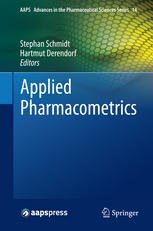

Most ebook files are in PDF format, so you can easily read them using various software such as Foxit Reader or directly on the Google Chrome browser.
Some ebook files are released by publishers in other formats such as .awz, .mobi, .epub, .fb2, etc. You may need to install specific software to read these formats on mobile/PC, such as Calibre.
Please read the tutorial at this link: https://ebookbell.com/faq
We offer FREE conversion to the popular formats you request; however, this may take some time. Therefore, right after payment, please email us, and we will try to provide the service as quickly as possible.
For some exceptional file formats or broken links (if any), please refrain from opening any disputes. Instead, email us first, and we will try to assist within a maximum of 6 hours.
EbookBell Team

5.0
78 reviewsThis comprehensive volume provides an update on the current state of pharmacometrics in drug development. It consists of nineteen chapters all written by leading scientists from the pharmaceutical industry, regulatory agencies and academia. After an introduction of the basic pharmacokinetic and pharmacodynamic concepts of pharmacometrics in drug development, the book presents numerous examples of specific applications that utilize pharmacometrics with modeling and simulations over a variety of therapeutic areas, including pediatrics, diabetes, obesity, infections, psychiatrics, Alzheimer’s disease, and dermatology, among others. The examples illustrate how results from all phases of drug development can be integrated in a more timely and cost-effective process.
Applying pharmacometric decision tools during drug development can allow objective, data-based decision making. At the same time, the process can identify redundant or unnecessary experiments as well as some costly clinical trials that can be avoided. In addition to cost saving by expedited development of successful drug candidates, pharmacometrics has an important economic impact in drug product selection. Unsuccessful drug candidates can be identified early and discontinued without expending efforts required for additional studies and allocating limited resources. Hence, pharmacometric modeling and simulation has become a powerful tool to bring new and better medications to the patient at a faster pace and with greater probability of success.